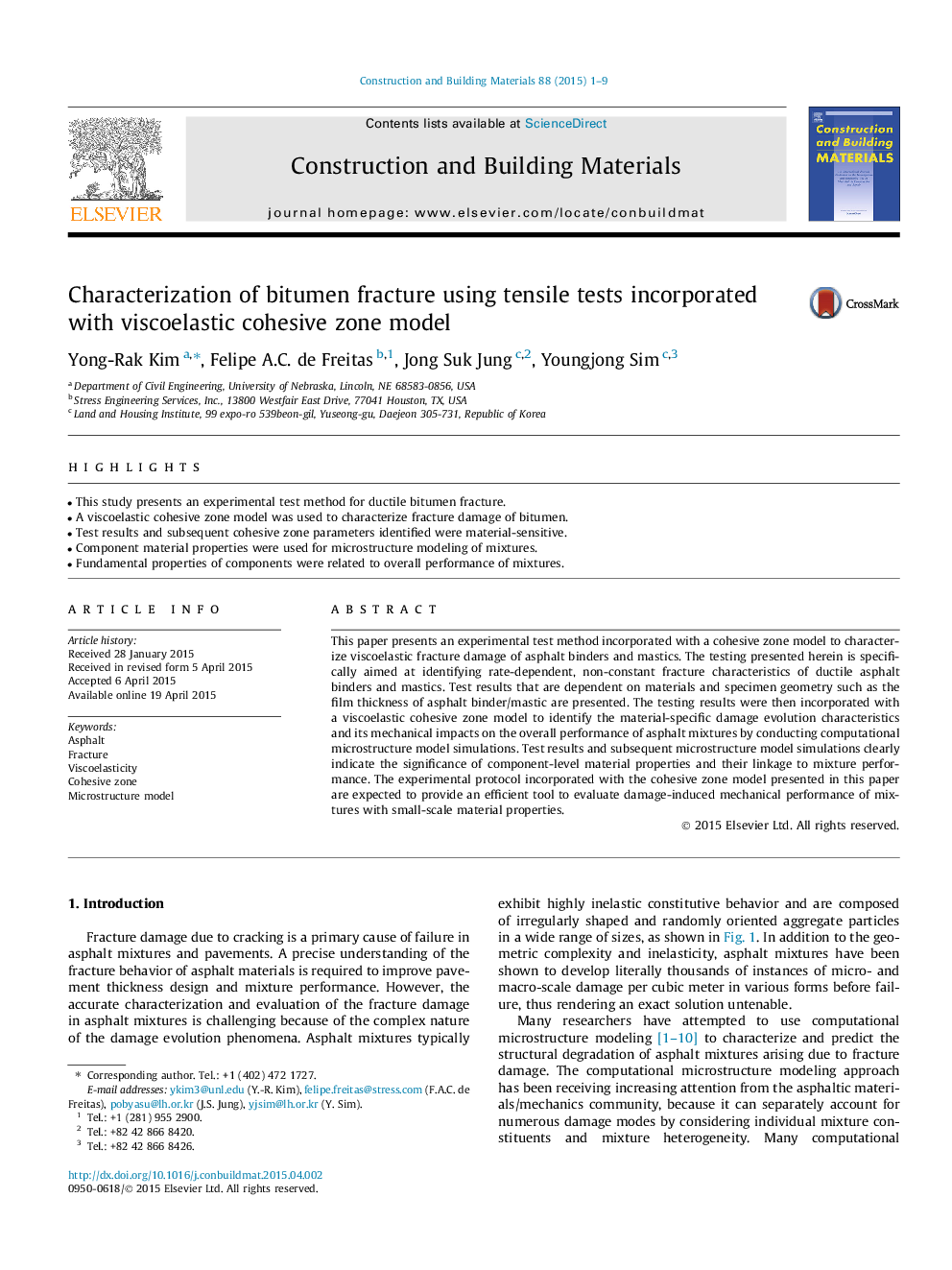| Article ID | Journal | Published Year | Pages | File Type |
|---|---|---|---|---|
| 256946 | Construction and Building Materials | 2015 | 9 Pages |
•This study presents an experimental test method for ductile bitumen fracture.•A viscoelastic cohesive zone model was used to characterize fracture damage of bitumen.•Test results and subsequent cohesive zone parameters identified were material-sensitive.•Component material properties were used for microstructure modeling of mixtures.•Fundamental properties of components were related to overall performance of mixtures.
This paper presents an experimental test method incorporated with a cohesive zone model to characterize viscoelastic fracture damage of asphalt binders and mastics. The testing presented herein is specifically aimed at identifying rate-dependent, non-constant fracture characteristics of ductile asphalt binders and mastics. Test results that are dependent on materials and specimen geometry such as the film thickness of asphalt binder/mastic are presented. The testing results were then incorporated with a viscoelastic cohesive zone model to identify the material-specific damage evolution characteristics and its mechanical impacts on the overall performance of asphalt mixtures by conducting computational microstructure model simulations. Test results and subsequent microstructure model simulations clearly indicate the significance of component-level material properties and their linkage to mixture performance. The experimental protocol incorporated with the cohesive zone model presented in this paper are expected to provide an efficient tool to evaluate damage-induced mechanical performance of mixtures with small-scale material properties.
